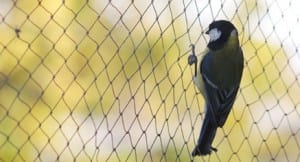 Do you have wildlife questions and wonder where to turn for information?
Do you have wildlife questions and wonder where to turn for information?
Do you find strange runways in your grass when the snow melts? What is banging on your siding and why?
You can turn to your Broomfield Wildlife Masters for help with these issues and more.
Question: After snow melts, I find 1-2″ wide runways throughout my lawn. What are these, and how can I prevent it?
Answer: Meadow Voles make these runways under the snow in order to find food.
There are several methods used to reduce vole damage and population; including habitat management and exclusion.
Habitat management involves close mowing and weed control in grassy borders next to your yard. Voles avoid exposed areas so close mowing of your lawn in the fall, plus raking and repairing runway damage will disrupt their activities. Water and fertilize the runway area to keep the voles away. Voles may also take up residence near bird feeders, which will be an easy food supply all year round.
To exclude voles from gnawing on your trees and shrubs, encircle the trees/shrubs with ¼” mesh-hardwire cloth or a 3″ diameter Vexar plastic-mesh cylinder. These items should be buried 3″ – 6″ below the surface and extend 18″ above ground. There are no foolproof methods to exclude voles from your lawn but these techniques will help reduce their activity.
Question: There is a bird pecking a hole in the side of my house. How can I stop it?
Answer: In the spring, Northern Flickers attract a mate by drumming on loud objects such as an eave, roof exhaust pipes or rain gutters, and siding. Once the flicker finds a mate, the drumming will stop and nesting begins. The flicker can nest in wood or stucco. Options include exclusion, scare devices, or preventive techniques. Exclusion involves patching the hole with aluminum flashing. A scare tactic could be to hang a hawk silhouette near the hole. Finally, a preventive method could be to hang plastic netting or streamers over the hole.
Question: I have pigeons living on my roof. How can I get rid of them?
Answer: You have several options to exclude pigeons that roost on your roof. You can place ½” to 1″ hardware cloth or plastic netting over eaves, vents, or other openings to prevent access. Pigeons will roost and nest on ledges that are at a 45 degree angle. You can alter the angle of the ledge by using a sheet of metal or wooden plank. A third exclusion technique would be the use of a porcupine wire. A porcupine wire can be made by using a Styrofoam ball and inserting two-foot lengths of wire. The wire should stick straight out at all angles, around the ball. It should look like a porcupine when you are finished and it will prevent the pigeons from landing. A fourth option is to stretch two or more steel wires above and in front of the ledge. This will also deter pigeon landings. The exclusion method best suited for your home will be determined by where the pigeons are landing or roosting.
Question: I have something eating my flowers. What is it and what can I do?
Answer: There are several animals that could be guilty of eating your flowers. Your Wildlife Master will need to know a few more details. One important item to know is the angle at which the flower stem is cut. If the stem is cut at a 45 degree angle, you probably have a hungry rabbit. You can prevent rabbits from eating flowers by erecting a two-foot tall fence using one-inch mesh fencing. Bury the mesh fencing two inches deep around your flower garden.
Question: I have a duck on a nest in my backyard. What should I do?
Answer: Please call a Wildlife Master at the telephone number below for advice. The Wildlife Master can share numerous tips on how to coexist. In general, active migratory bird nests cannot be disturbed.
For more information about a variety of techniques for handling wildlife issues in Broomfield, call the Broomfield Wildlife Masters Hotline at 303.464.5554. The Broomfield Wildlife Masters are Broomfield residents that volunteer to assist their fellow citizens by providing advice on how to minimize conflicts with wildlife.
About Redden Custom Netting
In 1958, John Redden started Redden Net Co. Ltd to supply commercial fishing gear to the fishing communities of the Pacific Northwest. Now, more than fifty years later, we have an in-house net loft staffed by professional, experienced net builders – and our executive team has more than 100 combined years of experience in every facet of industrial netting. So no matter what industry you’re in, if you need a net, we can build it.
Over the last fifty years, our technology, applications, and materials have become more complex, but our business philosophy remains simple. Treat employees and customers – right. We do. And we’ll do it for you.
Contact:
Phone: 1.800.667.9455 (Toll Free)
Email: info@redden-net.com
Web: http://redden-net.com
